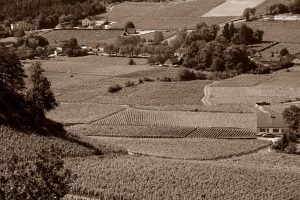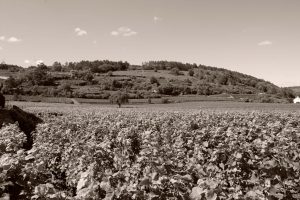Because the world of wine does not escape a reflection and a dynamic oriented towards eco-responsibility, at LOUIS MAX we are sensitive to all the steps taken by certain winegrowers to offer a quality wine whose environmental impact is minor. From sustainable viticulture to organic farming, from the preservation of biodiversity to the control of energy consumption, several areas of intervention are part of a eco-responsible approach to wine production in Bourgogne.
How can a wine be eco-responsible?
A wine is not a product quite like any other. It is an agricultural product… more precisely a viticultural one and its culture interacts directly with its surrounding nature. Viticulture has a direct impact on the environment, whether in the protection of biodiversity or the preservation of soils and natural resources.
Its production process, from working the soil and the vines to vinification and up to its packaging, has an environmental impact since it consumes energy, and raw materials and interferes with its terroir.
The last aspect of the impact of the wine sector concerns the societal impact, since without people, there is no wine. Focusing on preserving the quality of work of these women and men who accompany the journey of wine from the vine to the bottle is a major challenge for the entire wine industry in Bourgogne.
Eco-responsibility begins in the vineyard.
The starting point of a viticultural activity is of course the vine! Monoculture systems such as vines are more vulnerable to disease. In terms of eco-responsibility, one of the major objectives is therefore to reduce, or even exclude, the use of conventional phytosanitary products and in the first place CMRs (Carcinogenic-Mutagen-Reprotoxic).
Many estates are now converting to organic farming by meeting the requirements of the specifications of certifying bodies such as ECOCERT.
The challenge is to review practices in order to find an ecological balance favorable to the development of the vine and its ecosystem.
This starts with the use of products from natural treatments whose maximum doses are regulated. Certain approaches accompany this type of viticulture, for example, the way of working the land: plowing, scratching, digging in order to change practices for even more fertile soil rich in biodiversity.
Preserving Biodiversity
By their major presence in Bourgogne, the vineyards have a significant impact on the biodiversity of the region. With practices that are ever more respectful of the coexistence of the vine with the living world that surrounds it, these lands are becoming real sources of biodiversity and balance for the ecosystem as a whole.
The reduction of conventional phytosanitary products, the grassing of the vines or the establishment of inter-row flowery strips... all these practices create new habitats for many animal species, including “crop auxiliaries” (spiders, hymenoptera, etc.) which help to naturally limit the presence of pests in the vine.
Reducing environmental impact in wine production
The other challenge of an eco-responsible approach to wine production is to reduce consumption of energy and natural resources.
Indeed, it is considered that the production of one liter of red wine requires 6.4 liters of water and 1.43 kWh of energy.
The eco-responsible approaches therefore go through energy savings on all possible levels: tractors, machines, buildings... or the use as much as possible ofrenewable energies : some farms have chosen to install photovoltaic panels of the roof of their estates.
Then comes the impact of the packaging. If the glass bottle is rather virtuous, the choice of a lighter bottle is possible, the optimization of packaging such asbottle dressing (labels, caps) or the transport boxes can be studied to fit into a eco-responsible approach.





